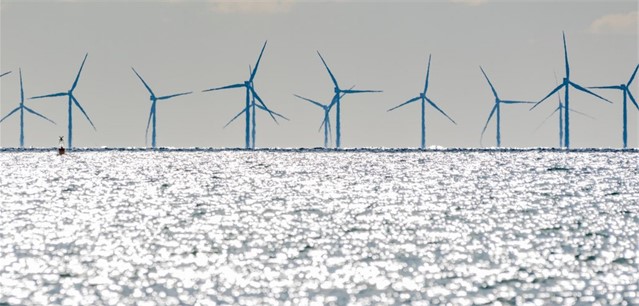Background to the report
In 2019, the government set a target to achieve net zero greenhouse gas emissions by 2050. This will require changes across society, from the way people heat their homes to the way they travel.
Jump to downloadsDecarbonising electricity generation is fundamental to the government’s net zero strategy because many sectors of the economy, such as transport and heating in buildings, are likely to switch to using electricity instead of fossil fuels such as natural gas. In 2021, the government set an ambition that by 2035 all electricity should be generated using clean sources, subject to security of supply, while meeting an expected increase in electricity demand of up to 60%. This means phasing out polluting types of electricity generation, such as gas-fired power stations and replacing them with a new mix of zero and low-carbon generation, including wind, solar and nuclear power.
Switching to clean electricity generation has increasingly become part of the government’s plan to ensure there is an affordable and secure domestic energy supply in response to the disruption to international gas supplies that has followed Russia’s invasion of Ukraine. In April 2022, the government published the British Energy Security Strategy. This emphasised how accelerating progress towards a decarbonised power sector would, over time, enable a secure supply of electricity and affordable bills. The strategy set out increased government ambitions for transitioning to zero and low-carbon electricity generation during the 2020s, including increased ambitions for offshore wind and nuclear power.
In February 2023, the government established the Department for Energy Security & Net Zero (DESNZ), which has overall responsibility for ensuring the government achieves its power sector ambitions.
Scope of the report
This report sets out the main challenges that DESNZ faces to decarbonise power. We have assessed the progress DESNZ has made since it set the ambition to decarbonise power by 2035 and examined how well it is set up to oversee future progress. We use offshore wind and nuclear power as examples of zero and low-carbon generation to illustrate some of our points.
We recognise that DESNZ has made less progress since 2021 with establishing its long-term delivery plan than it intended because it needed to shift focus to respond to short-term challenges on energy supply and the cost of consumer bills. This report is therefore an early assessment in which we set out potential risks DESNZ needs to manage and make recommendations aimed at supporting DESNZ as it develops its plan. In the future we will assess government’s progress with achieving power sector decarbonisation, how well it is managing the risks highlighted in this report, and the value for money of its interventions.
Video summary
Conclusions
Decarbonising power is the backbone of the government’s plan to achieve net zero. Although power sector emissions have reduced significantly over the past three decades, DESNZ cannot be complacent about the challenges involved in decarbonising further while continuing to ensure a secure supply that meets the predicted electricity demand increases. This will require substantial investment in new capacity, alongside system-wide modernisation, and needs a joined-up approach to ensure changes happen in sequence and with coherence.
The longer DESNZ goes without a critical path bringing together different aspects of power decarbonisation, the higher the risk that it does not achieve its ambitions, or it does so at greater than necessary cost to taxpayers and consumers. While the recent energy crisis has understandably delayed DESNZ’s progress in establishing a longer-term delivery plan for decarbonising power by 2035 it has reinforced the importance of ensuring that plan is resilient to external shocks
Downloads
- Report - Decarbonising the power sector (.pdf — 504 KB)
- Summary - Decarbonising the power sector (.pdf — 161 KB)
- ePub - Decarbonising the power sector (.epub — 2 MB)
Publication details
- ISBN: 978-1-78604-475-4 [Buy a hard copy of this report]
- HC: 1131 2022-23
Press release
View press release (1 Mar 2023)

